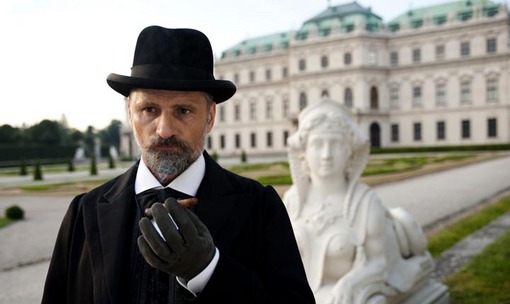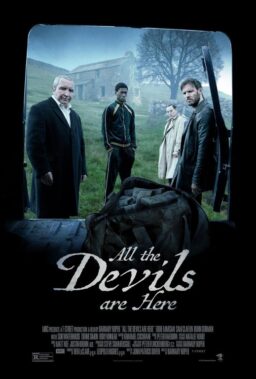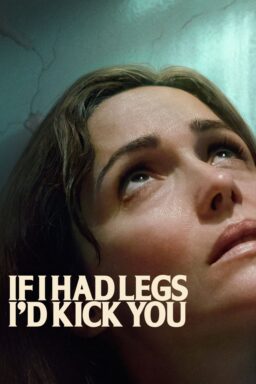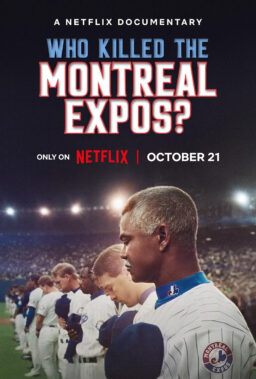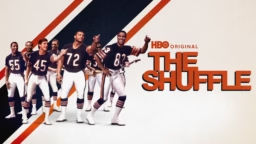(Picture the headline above in Comic Sans.) MSN Movies contributors have selected our Top 10 Movies of 2011. What does that mean? Whatever you want it to mean. Are these movies “the best”? Are they our favorites? Are they “movies we got to see before the deadline”? In my case, it’s some combination of all three — but I’m really quite happy with the aggregate results. As for my own contribution, as usual I hadn’t seen everything I wanted to by the deadline (“A Separation,” “Hugo,” “The Artist,” “Mysteries of Lisbon,” “Midnight in Paris” among them), and still haven’t, but them’s the breaks. My lists will evolve in coming days (Village Voice/LA Weekly poll, indieWIRE Critics Poll, and so on), but I do want to say that I went all-in with my emotions. I picked these movies ’cause I love ’em, not because I merely admire them or appreciate them.
The Big List starts here; the individual lists start here.
Of course, as much as we love lists, the best thing about the MSN feature is that we have short appreciations of the top 10 movies, written by some very perceptive and eloquent people. And me, too. You will find the Group List, with excerpts and links to the full mini-essays, below — and my personal ballot at the bottom. Let me know what you think — and be sure to read the previous post (“Idiocracy and the ten-best trolls“) for a good laugh:
From Glenn Kenny‘s introduction:
“A superficial look at the 10 films may confirm the standard bias many have about film critics as a class: that is, that they’re moody, furrow-browed agoraphobics who cannot resist their penchant for the obscure. But wait, we implore you, wait. Don’t just take the superficial view. The movies that made our top 10 list are all, save two, in the English language; more important, though, is that they’re all works of art connected very directly to not-at-all-obscure aspects of the human condition. Family, loss, betrayal, love, sex, how we talk about sex, how we break, how we heal, how we grieve, how we survive: They’re all in there.”
10. “Meek's Cutoff” (Kelly Reichardt) by James Rocchi:
“This has the big vistas and open spaces of a classic Western, to be sure (it’s even shot in the pre-widescreen Western aspect ratio we know from John Ford films and a thousand other classics), but it also has a rare sense of time as an element of composition: You’re pulled into the rhythm of the trek, slow and steady and terrified.”
9. “Hugo” (Martin Scorsese) by Glenn Kenny:
“While this film is first and foremost a fairy tale, it is still at heart a quintessential Scorsese story of lonely people and the worlds they make for themselves. Only here the invented worlds, works of imagination, are benign, and actually end up reaching out to the other characters and bringing them together.”
8. “The Artist” (Michel Hazanavicius) by Mary Pols:
“The film is a study of hubris and fear, but mostly, of the easy refuge found in artificiality, the very definition of most contemporary filmmaking. No scene stands out more than a series of takes from George’s silent ‘A German Affair,’ where he dances with Peppy. In one take they flirt, in another they giggle, and finally, as they try to be serious, something real blooms. George, undone, must leave the set….”
7. “A Dangerous Method” (David Cronenberg) by Kat Murphy:
“Do 2011’s end-of-days movies signal some collective anxiety? Electrified by energy and intelligence, David Cronenberg’s ‘A Dangerous Method’ also chronicles end-times, the halcyon era when Freud, Jung, et al., brought the unconscious to light even as the dark seeds of two world wars were germinating. ‘Method’ marks the rise of killer ideas; revolutionary theories skitter like hungry termites behind the film’s perfectly composed interiors and idyllic landscapes. There’s evident strain between civilized surfaces and the dangerous new work of defining madness. For Cronenberg, ideas aren’t dry abstractions; they’re as disturbingly alive, as wildly subversive as those phallic phages in ‘They Came From Within.'”
6. “Certified Copy” (Abbas Kiarostami) by Sean Axmaker:
“You could describe ‘Certified Copy,’ his first production made outside of the borders of Iran, as the cinematic equivalent of a Picasso cubist portrait, presenting multiple experiences along the timeline of a relationship in a single day. The breathtaking tectonic shift is all the more impressive by the subtlety and slyness of the transition, played out in long takes and the easy rhythms of Kiarostami’s heightened naturalism. He has a way of turning the details of his environment into evocative images: The river of sky reflecting across a car windshield illustrates the gulf between Binoche and Shimell, and a parade of hopeful young newlyweds and stooped old married couples continue their life story by proxy.”
5. “Tinker Tailor Soldier Spy” (Tomas Alfredson) by Richard T. Jameson:
“Early in ‘Tinker Tailor Soldier Spy,’ veteran cold warrior and abruptly retired spy George Smiley (Gary Oldman, magnificent) stares across his sitting room at a painting. The screen is vast, the painting tiny; we can make out only a pattern of frames within frames, one of them as red as a wound. Director Tomas Alfredson’s credit appears over the shot, making it seem a mite insistent as an abstraction of impenetrably enigmatic John le Carré world and an assertion of stylistic principle. The movie often has us watching people watching through frames — windows, doorways, ironwork — and being themselves watched; sometimes they furtively cherish the mutual recognition. Yet Alfredson’s signature shot isn’t just a viewing instruction….”
4. “Uncle Boonmee Who Can Recall His Past Lives” (Apichatpong Weerasethakul) by Jim Emerson:
“The mythological terrain here is as personal to Apichatpong as ‘Tree of Life”s is to Terrence Malick. You might recognize characters (or names) from his earlier pictures (‘Tropical Malady,’ ‘Syndromes and a Century’). And you can read about some of the how the film became (at some stage in its gestation) part of a larger multimedia installation/exhibition called Primitive; or how he envisioned it as a six-reel film shot in six different styles (from Thai horror movie to European art film), but all that is really incidental to the experience you have while watching and interpreting the film yourself. While it unfolds before you, it is, to borrow the title of another Apichatpong movie, blissfully yours.”
3. “The Descendants” (Alexander Payne) by Don Kaye:
“A number of major movies this year were about looking into the past and attempting to find some sort of solace or meaning there, creatively, personally or otherwise. But as Woody Allen revealed in his ‘Midnight in Paris,’ our view of the past is often distorted by our own desires, and things weren’t truly any better then than they are now. That’s why there’s not a whole lot of emotional truth in a simple homage. But there’s a ton of it in ‘The Descendants,’ which is ultimately about taking one’s eyes off the rearview mirror and peering into the future.”
2. “The Tree of Life” (Terrence Malick) by Glenn Whipp:
“There’s beauty, poetry, tyranny, death. There’s the birth of the universe. There are dinosaurs! Why dinosaurs? Short answer: (Again) Why not? Long answer: Perhaps Malick is reminding us that the creatures that once held dominion over the Earth no longer exist. Could the same fate befall their successors? Or maybe that little moment of grace where the big lizard spares its sickly cousin shows a way of avoiding that destiny. Again, it’s all about the questions, and Malick gives you enough to chew on here that you could return repeatedly to ‘Tree’ for years to come, knowing (and savoring) that your experience will be different each time you watch it.”
1. “Melancholia” (Lars Von Trier) by Kim Morgan:
“Von Trier, a sufferer himself, sincerely understands depression (just as he understood anxiety in ‘Antichrist’), which may be why he maddens many. Weaving himself into his characters, he’s sadistic, masochist, empathetic, self-obsessed, morbid and morbidly funny and then honest and honestly confused. With ‘Melancholia’ he grants depressives a gift….”
_ _ _ _ _
Jim Emerson’s list: (some titles link to things I’ve previously written)
1. “Uncle Boonmee Who Can Recall His Past Lives”
2. “Meek’s Cutoff”
3. “Melancholia”
4. “Certified Copy”
5. “Margaret”
6. “Tinker Tailor Soldier Spy”
7. “The Mill and the Cross”
8. “Take Shelter”
9. “A Dangerous Method”
10. “Carnage“
A few other movies I wish I could have squeezed in: “Poetry,” “A Separation,” “The Time That Remains,” “The Tree of Life,”* “The Descendants,” “Moneyball,” “The Skin I Live In,” “Contagion,” “Cold Weather,” “Martha Marcy May Marlene,” “Tabloid,” “Drive“…
* This is provisional. The theatrical release version of “Tree of Life” seems mushy and unfinished to me (particularly the Sean Penn-related passages at the beginning and end). I’m holding out for the promised six-hour version…

